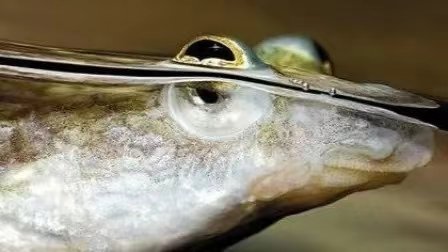Why is it that the quantitative aspects of biological characteristics are surprisingly consistent, such as creatures with eyes always having two or a multiple of two?
First, a side note: When asking questions about biology, it's important to be cautious with sweeping statements like "all organisms do ××," "all animals do ××," or "all plants do ××," as exceptions are common in the biological world. In animal-related inquiries, many people overlook the two largest animal phyla: mollusks (with 100,000 species) and arthropods (with 1.1 million species), and tend to refer to animals as if they were only vertebrates (with 70,000 species) or mammals. Returning to the question at hand, the number of various organs in organisms is more consistent at smaller taxonomic levels due to heredity and the lack of trait differentiation. Finally, speaking of eyes, the vast majority of vertebrates indeed have two eyes, an inheritance from their common ancestor's traits. Some have mentioned in the comments that certain vertebrates, such as lizards, frogs, and salamanders, have a "third eye," the pineal eye, which is photosensitive. Early vertebrates, like placoderms, antiarchs, coelacanths, early tetrapods, and early birds, had a third eye socket in their skull for the pineal eye, indicating that the pineal eye had visual capabilities at that time. Nowadays, it has mostly degenerated. Apart from vertebrates, most animals do not have just two eyes. For instance, scallops within the mollusk phylum can have 100 to 200 eyes.

Jellyfish have eyes known as "ocelli," which are simple in structure and can range from a few to several dozen in number. The eyes of jellyfish are divided into two main categories: marginal eyes, located at the edge of the jellyfish's bell-shaped body, are usually more numerous and can detect the direction and intensity of light. Apical eyes, located at the top of the bell, are fewer in number but more complex in structure, capable of perceiving light color and polarization. The lighthouse jellyfish possesses 24 marginal eyes, allowing it to sense changes in the brightness of the surrounding environment. The box jellyfish has 24 marginal eyes and 4 apical eyes, enabling it to perceive not only the direction and intensity of light but also its color and polarization. In contrast, the Portuguese man o' war lacks apical eyes and has only 19 marginal eyes, giving it relatively weaker visual capabilities.

Most insects have a pair of compound eyes, and in addition to the compound eyes, there are ocelli present between them. For example, wasps have three ocelli on their dorsal side.

Some insects that undergo complete metamorphosis have 1 to 7 pairs of lateral ocelli on their larvae, which are used to detect the movement trajectories and shapes of objects.

Arthropods such as spiders, which have eight ocelli, typically possess a pair of principal eyes located in the middle front of the head to perceive size and color. Additionally, there are six secondary eyes positioned on the sides, used for observing the movement of objects.

In vertebrates, the four-eyed fish has its two eyes divided into four parts, with each eye having two pupils and two corneas, allowing it to observe both the surface and underwater conditions separately.

Finally, in dark environments such as underground or the deep sea, some animals either lack eyes or have severely degenerated eyes, such as cave shrimps, blind salamanders, cave-dwelling blind crabs, blind snakes, and blind salamanders, among others.